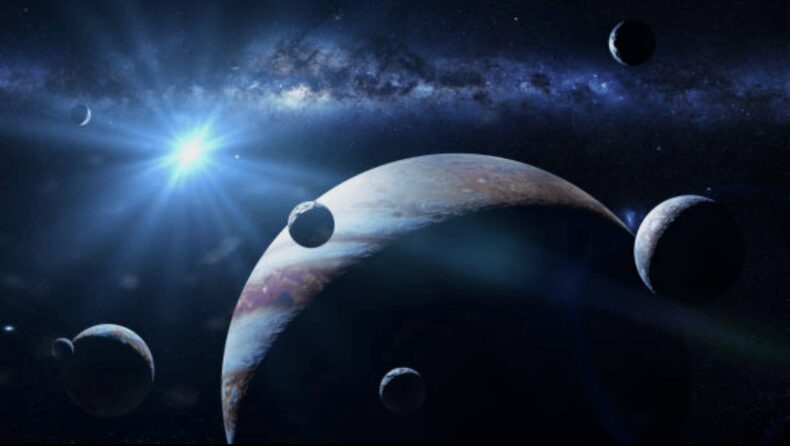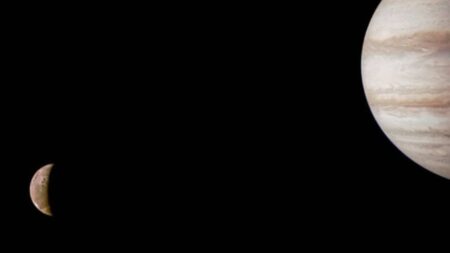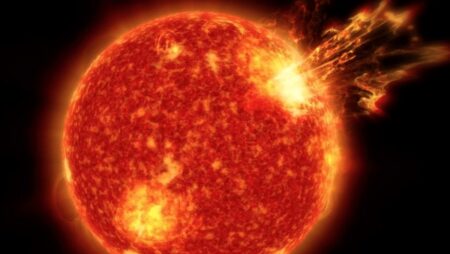In a new discovery, scientists have found a dozen new moons of Jupiter. With this addition of 12 new moons, the tally of Jovian moons has reached a whopping 92.
With this new exposition, the Gas Giant is now the planet with the highest number of satellites in the entire solar system. Second on this list is Saturn, with 83 confirmed moons.

Highlights
The details of these undiscovered moons and their orbits have been disclosed by the International Astronomical Union’s Minor Planet Center. These moons have also been added to the list maintained by the Minor Planet Center, according to confirmation from the Carnegie Institute’s Scott Sheppard, a member of the team.
In addition to discovering a lot of moons around Saturn a few years ago, Sheppard has been involved in the discovery of 70 moons around Jupiter. He further added that he expects the number of satellites of both Jupiter and Saturn to rise in the coming years.

According to a renowned American astronomy magazine, the publication of more of these orbits is expected soon. All the newly discovered moons are tiny and far from Jupiter. A total of more than 340 days are required for a newly discovered moon to orbit the largest planet in the solar system.
These moons were discovered by astronomers in Hawaii and Chile in 2021 and 2022, and the follow-up observations confirmed their orbits.
Sheppard estimates that the newest moons are between 0.6 and 2 miles (1 and 3 kilometers) in size.

The moons of Jupiter have intrigued astronomers for a very long time, and various missions are in place to study and investigate the Jovian moons. A spacecraft from the European Space Agency will observe Jupiter and some of its largest, icy moons in April this year. NASA also plans to launch the Europa Clipper next year to investigate Jupiter’s moon of the same name, which may harbor an ocean beneath its frozen surface.

These moons have retrograde orbits, i.e., they orbit in the opposite direction as the inner satellites. Due to this reason, there is a high probability that these moons are captured by Jupiter. Moreover, only five of these moons have a diameter exceeding 8 km. Collisions between larger objects probably led to the formation of the smaller moons, the astronomers have concluded.
According to Scott Sheppard, only half of these newly discovered moons can be given a name since only half of them are at least one mile big.

According to current data, Uranus has 27 confirmed moons, Neptune has 14, Mars has two, and Earth has one. To date, Venus and Mercury have discovered no moons.
The history of the discovery of Jovian Moons
The first moon other than Earth was discovered in 1610 by Galileo Galilei using a telescope, the Galilean moons, which are now known as the Galilean moons. This is also the first discovery of an apparent celestial motion not centered on Earth. Consequently, Copernicus’ heliocentric theory gained much support for the motion of the planets.

Using a 36-inch refractor at Lick Observatory in California, Edward Emerson Barnard observed Jupiter’s fifth satellite in 1892. Later, Amalthea was the name of this moon.
The latest discovery before this one was in 2018, when 10 new moons of Jupiter were found and their details published by the International Astronomical Union.
The largest moon of Jupiter: Ganymede
It is often said that Jupiter is like a miniature solar system. The gas giant is composed of hydrogen and helium, the same elements as the sun, and is surrounded by moons of differing geological compositions. Of all these moons, Ganymede, which was discovered in 1610 by Galileo, is the largest.

This moon is larger than Mercury and Pluto in size and three-quarters the size of Mars. With a radius of 3280 miles, it is the largest in the solar system. Ganymede would be classified as a planet if it rotated around the Sun instead of Jupiter.
Astronomer Simon Marius gave it its name after the mythological Ganymede, the Trojan prince coveted by Zeus (the Greek counterpart of Jupiter), who carried him off to serve as a cupbearer.













